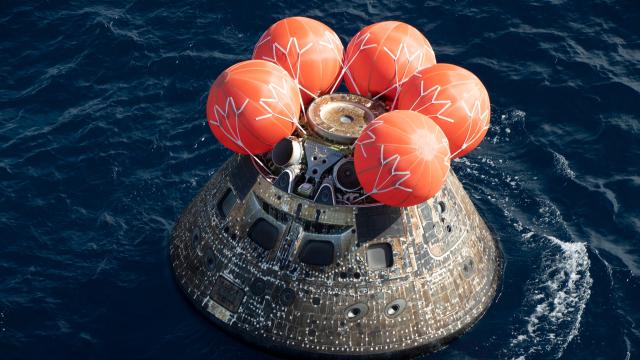A fully intact and toasty-hot Orion spacecraft came home on Sunday from its trip around the Moon, splashing down off the coast of Baja, California. The historic mission ended as it began, with a fiery trip through Earth’s atmosphere, and with NASA pulling off one daring accomplishment after another.
Similar to the other phases of this impressive 25.5-day mission, the uncrewed capsule’s reentry, splashdown, and recovery provided no shortage of visual spectacles.
Homeward bound
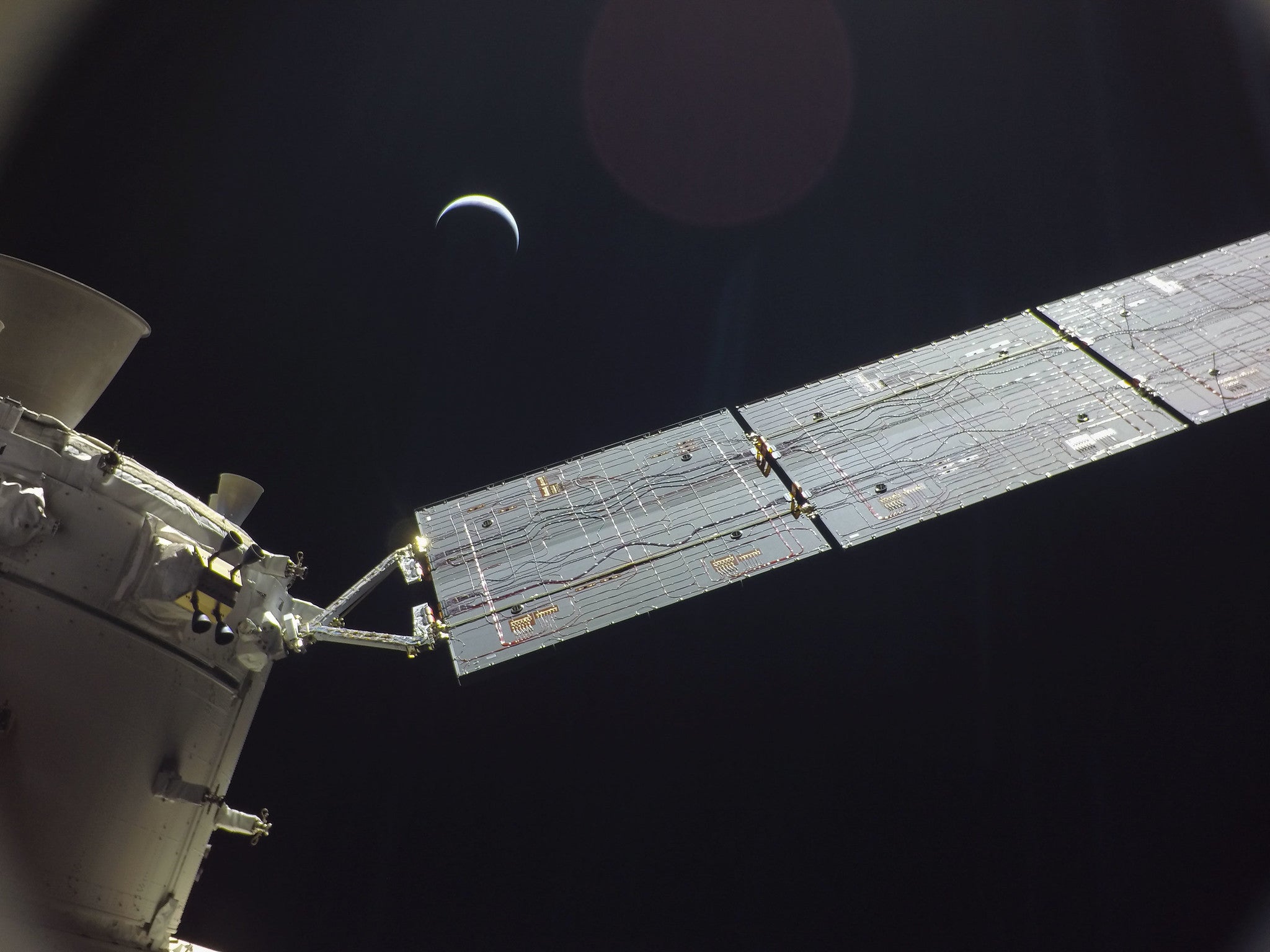
A camera mounted to an Orion solar array captured this photo of Earth on December 10, the 25th day of the Artemis 1 mission. At 4:00 a.m. AEDT on Sunday, Orion bid farewell to the European Service Module, which had been dutifully providing power and propulsion during the course of the mission.
Up and away!
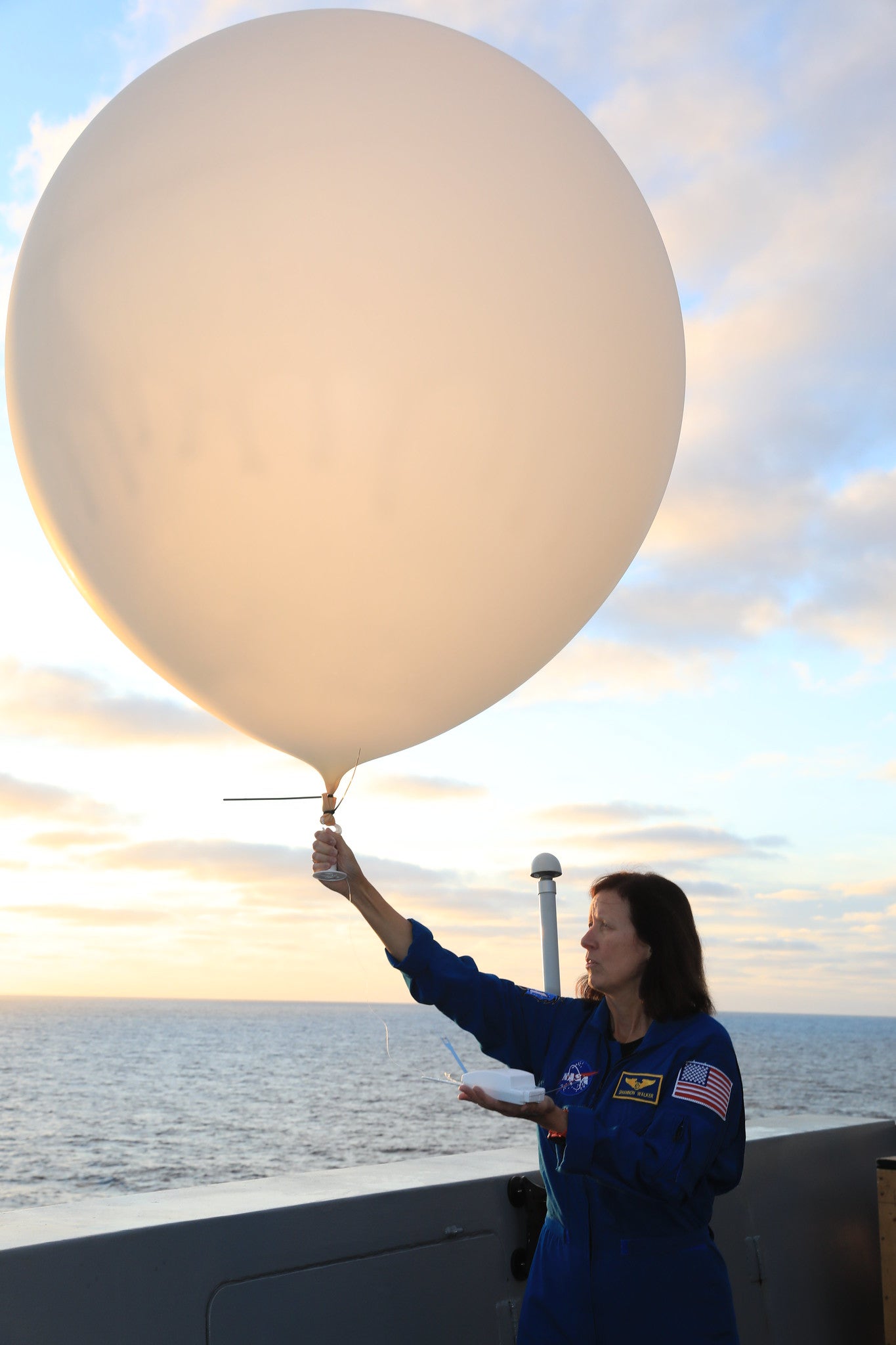
Astronaut Shannon Walker released a weather balloon from the deck of the USS Portland 24 hours prior to Orion’s reentry and splashdown. Walker, along with members of the U.S. Space Force 45th Weather Squadron, worked alongside NASA’s Landing and Recovery team and the Department of Defence.
Mid-reentry
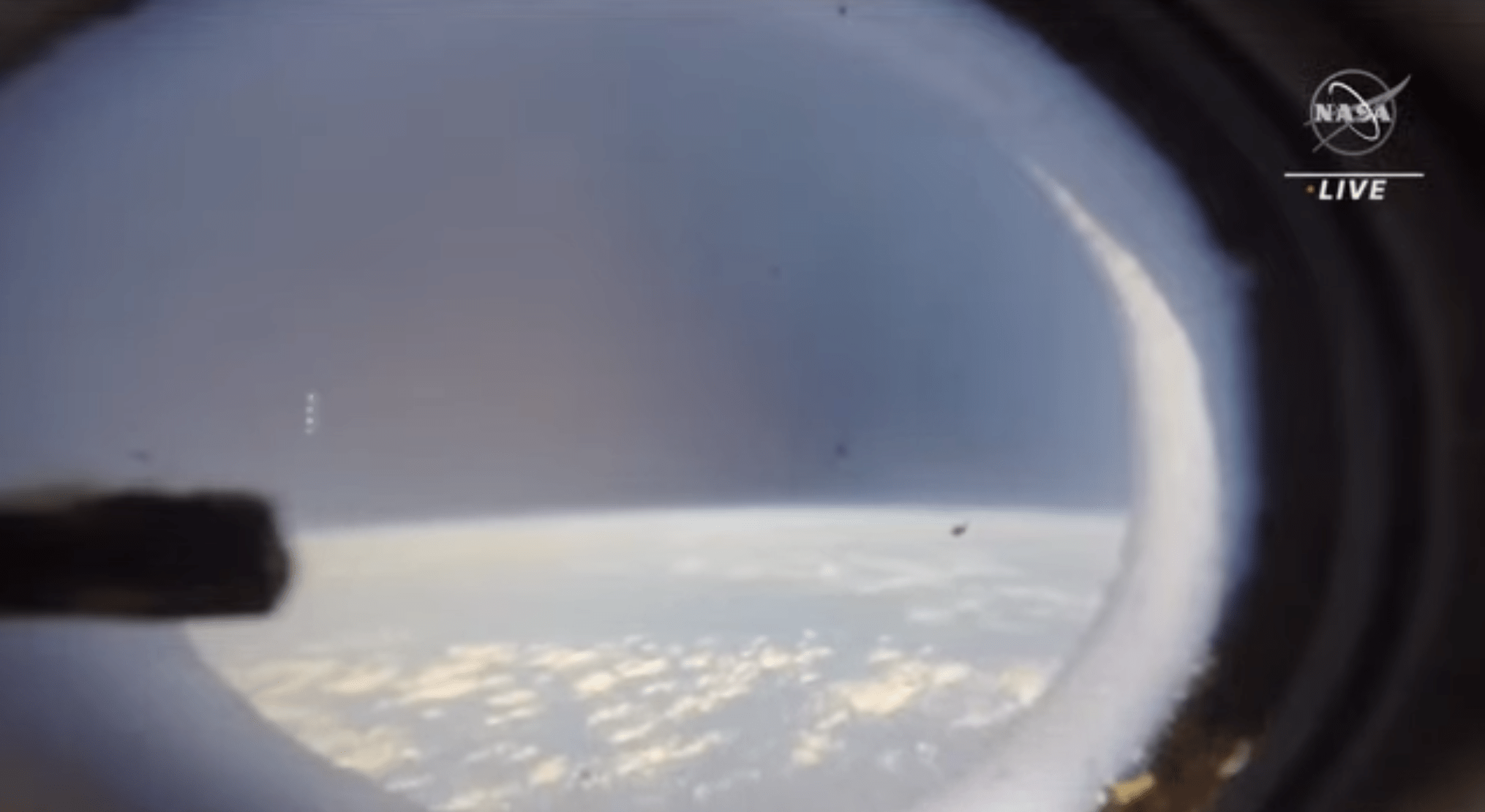
Shortly after re-entry began on Sunday, Orion entered into the first of two communication blackout periods, the result of electrically charged plasma caused by extreme heat; atmospheric friction generated temperatures in excess of 5,000 degrees Fahrenheit. The first blackout period lasted for five minutes, and the second for half that time. This view from Orion, though grainy, was among the first to be received after the capsule emerged from the second communications blackout period.
Drogues deployed
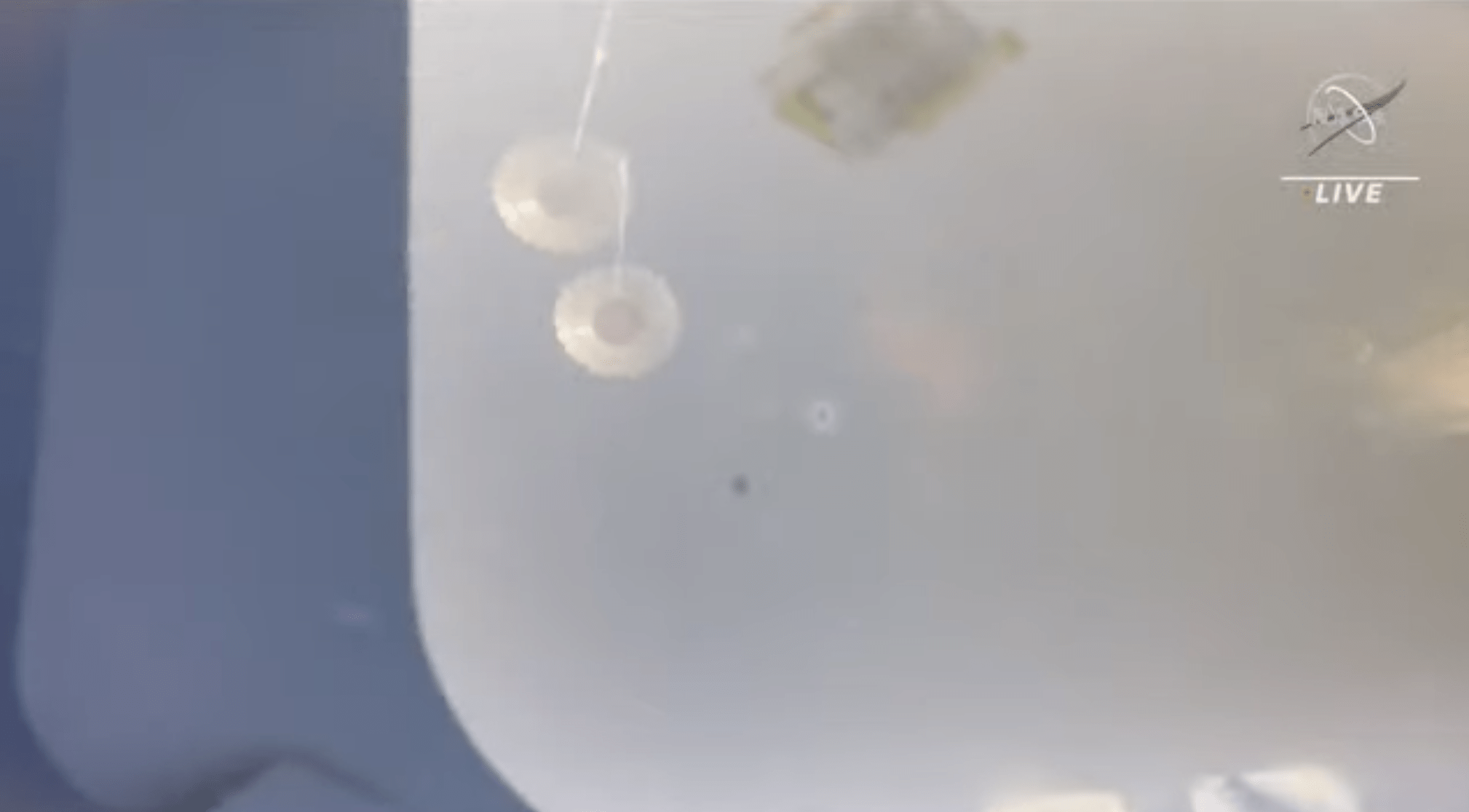
This view, looking straight up, shows Orion’s drogue parachutes. The drogues were deployed at an altitude of 22,000 feet (6,700 meters), while Orion chugged along at speeds reaching 451 km per hour (450 km/hr).
Mains up
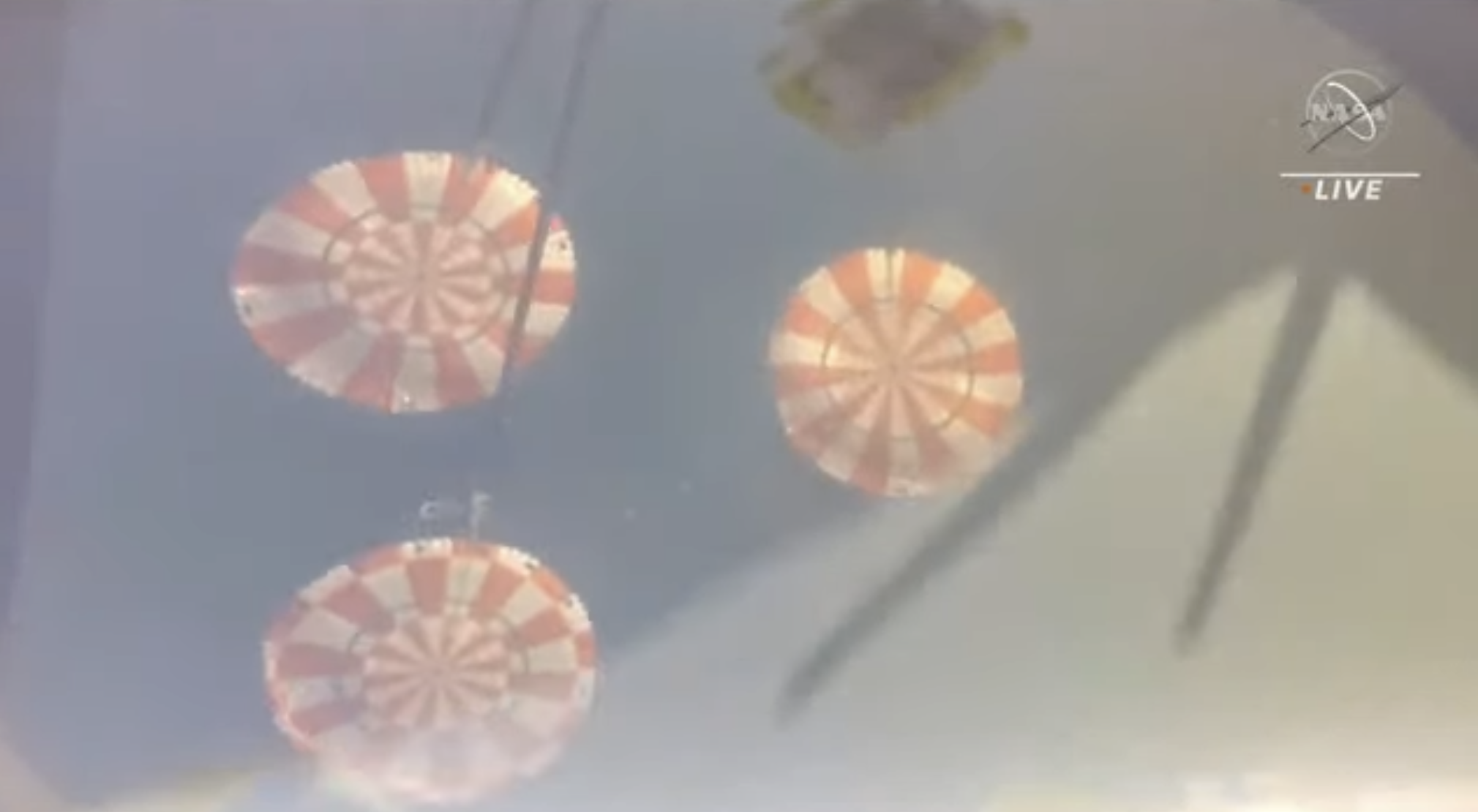
Orion’s main parachutes went into action at an altitude of 5,000 feet (1,520 meters), slowing the spacecraft down to a manageable 20 mph (32 km/hr). Incredibly, the craft was moving at 32 times the speed of sound when reentry began only a few minutes earlier.
Almost home
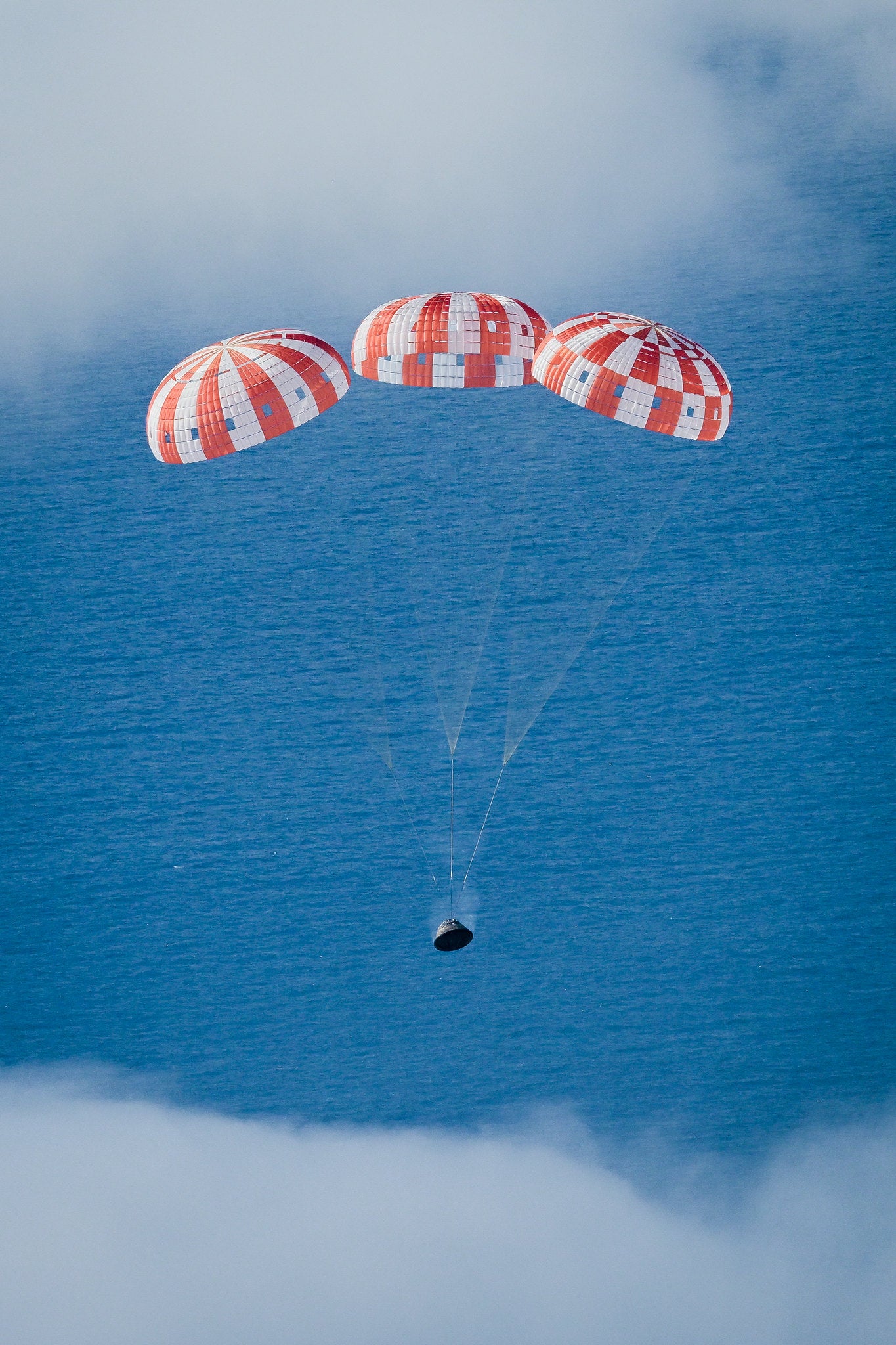
The now-concluded Artemis 1 mission sets the stage for Artemis 2, in which three NASA astronauts and one Canadian astronaut will perform a similar trek around the Moon.
“With Orion safely returned to Earth we can begin to see our next mission on the horizon which will fly crew to the Moon for the first time as a part of the next era of exploration,” Jim Free, NASA associate administrator for the Exploration Systems Development Mission Directorate, said in a statement. “This begins our path to a regular cadence of missions and a sustained human presence at the Moon for scientific discovery and to prepare for human missions to Mars.”
The final seconds of the mission
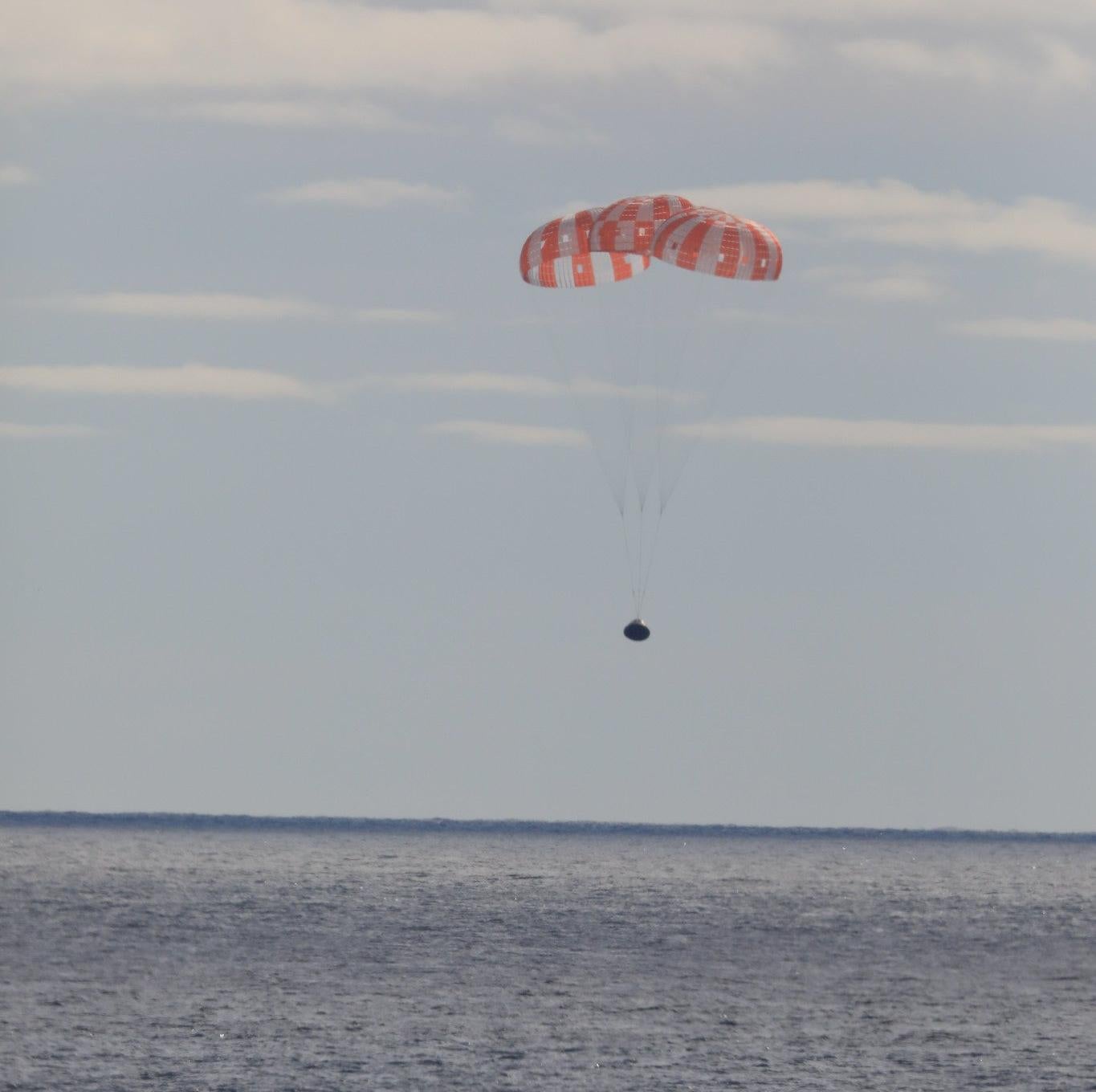
Orion splashed down south of Guadalupe Island a few hundred miles west of Baja, California.
Splashdown!
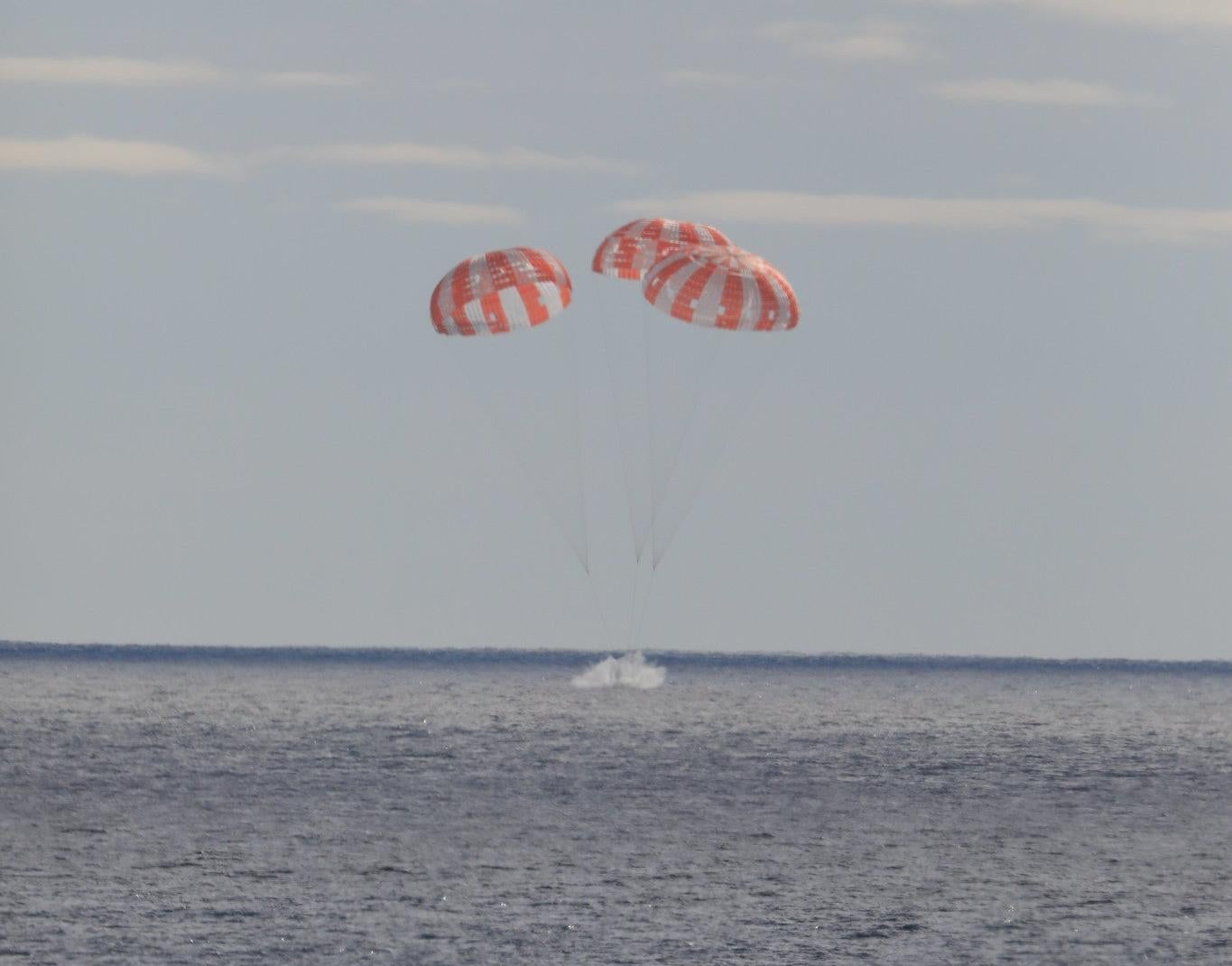
Orion arrived back at Earth on Sunday, December 11 at 9:40 a.m. PT (4:40 a.m. AEDT), ending the historic 25.5-day mission to the Moon and back. In total, Orion travelled more than 2.1 million km during the journey.
Inspection from the skies

A helicopter crew flew above capsule shortly after splashdown to inspect for damage. The USS Portland — a Navy dock ship — can be seen in the background.
The returning hero

“The splashdown of the Orion spacecraft — which occurred 50 years to the day of the Apollo 17 Moon landing — is the crowning achievement of Artemis 1,” NASA administrator Bill Nelson said in a statement. “From the launch of the world’s most powerful rocket to the exceptional journey around the Moon and back to Earth, this flight test is a major step forward in the Artemis Generation of lunar exploration.”
The recovery team at work
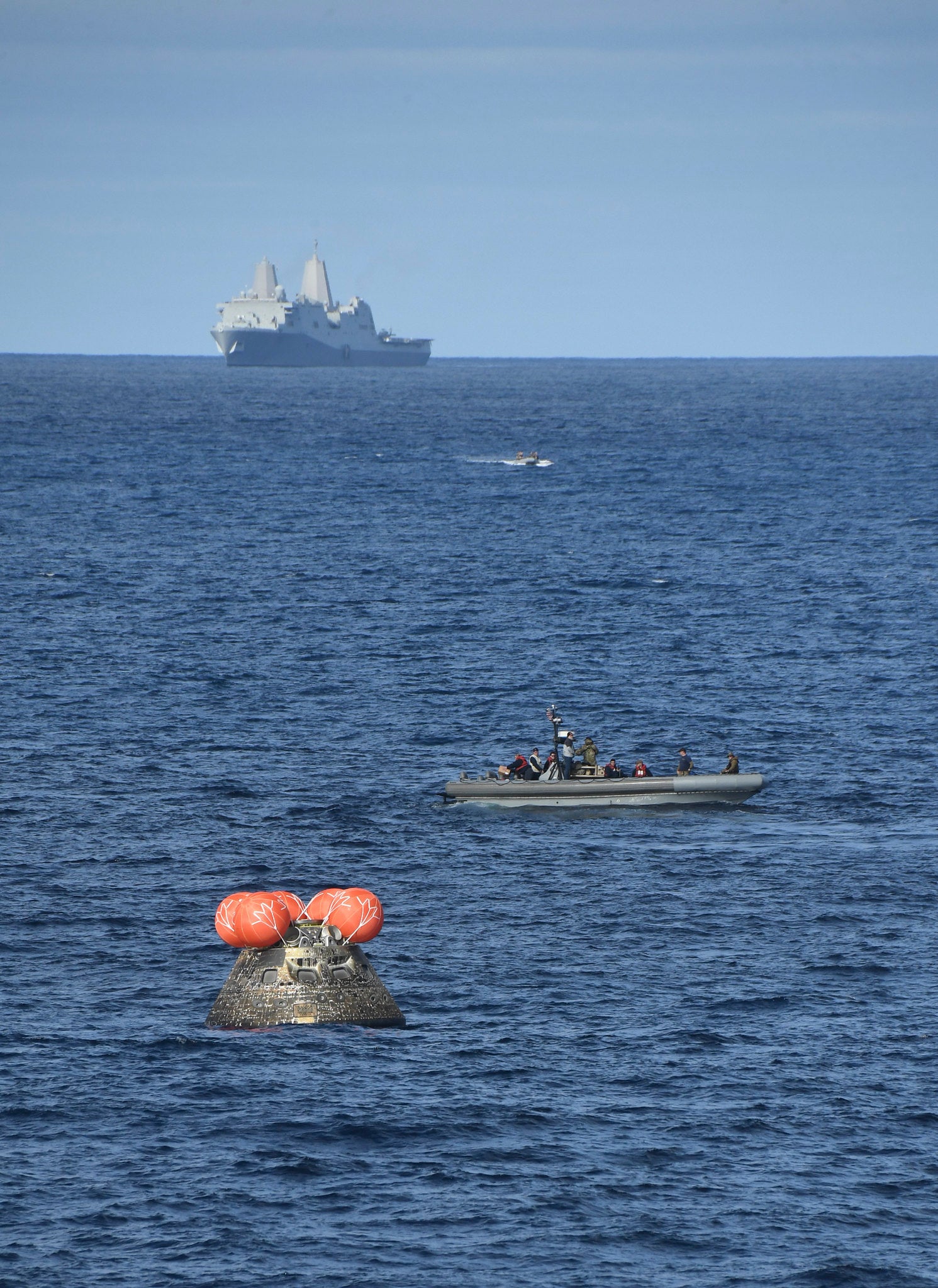
The recovery team stood back for over an hour as engineers gathered valuable data about the newly arrived capsule, including heat shield and internal cabin temperatures. Divers checked for leaking ammonia and hydrazine prior to mounting a stabilisation collar around the capsule’s base.
More on this story: Here’s What Will Happen Once NASA’s Orion Splashes Down on Sunday
To the boat
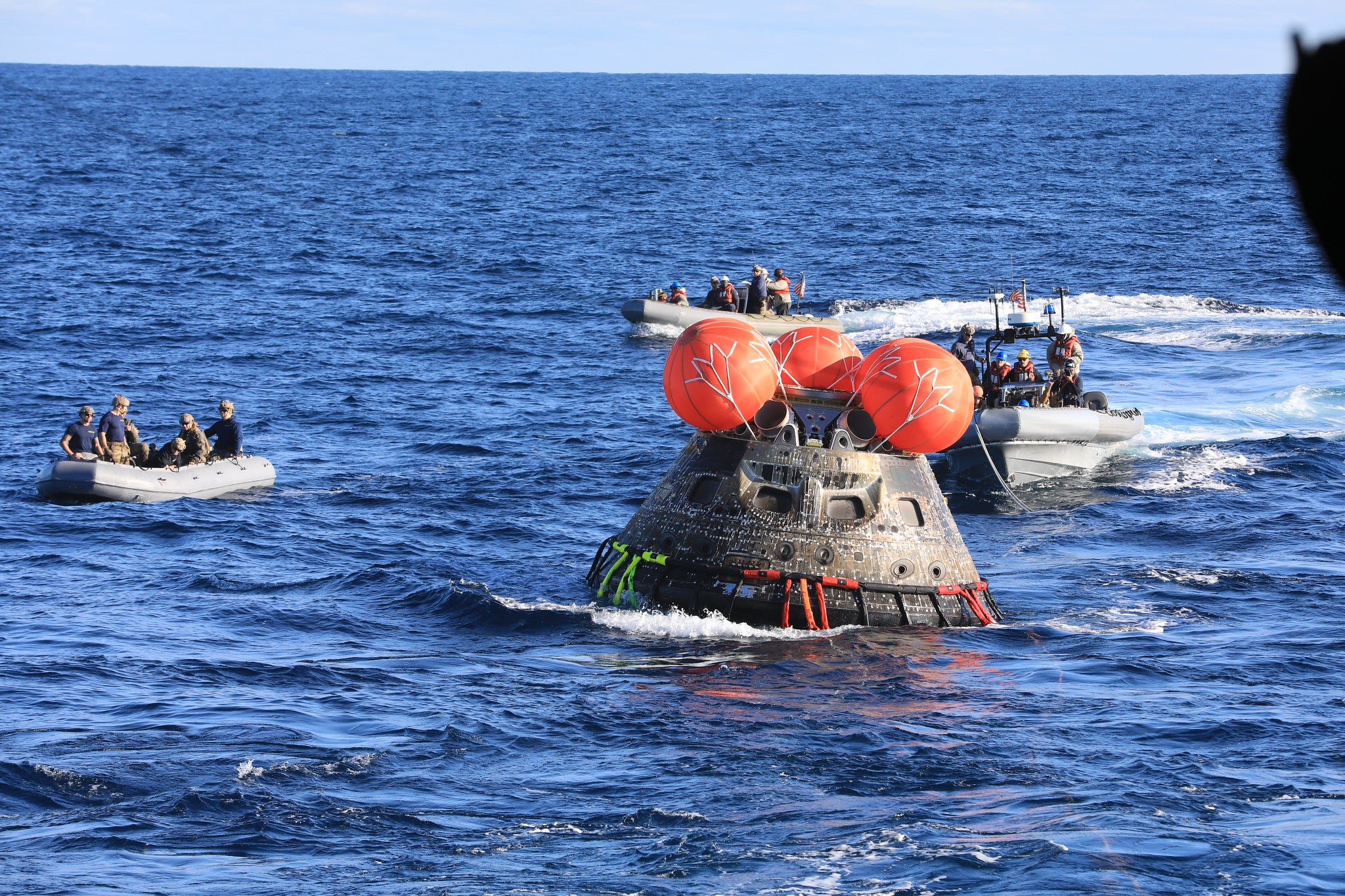
The recovery team attached a winch line and a series of tending lines to Orion, which pulled Orion toward the awaiting dock ship.
The final stretch

The USS Portland features a well deck at the waterline, allowing Orion to dock directly inside the vessel.
In the cradle
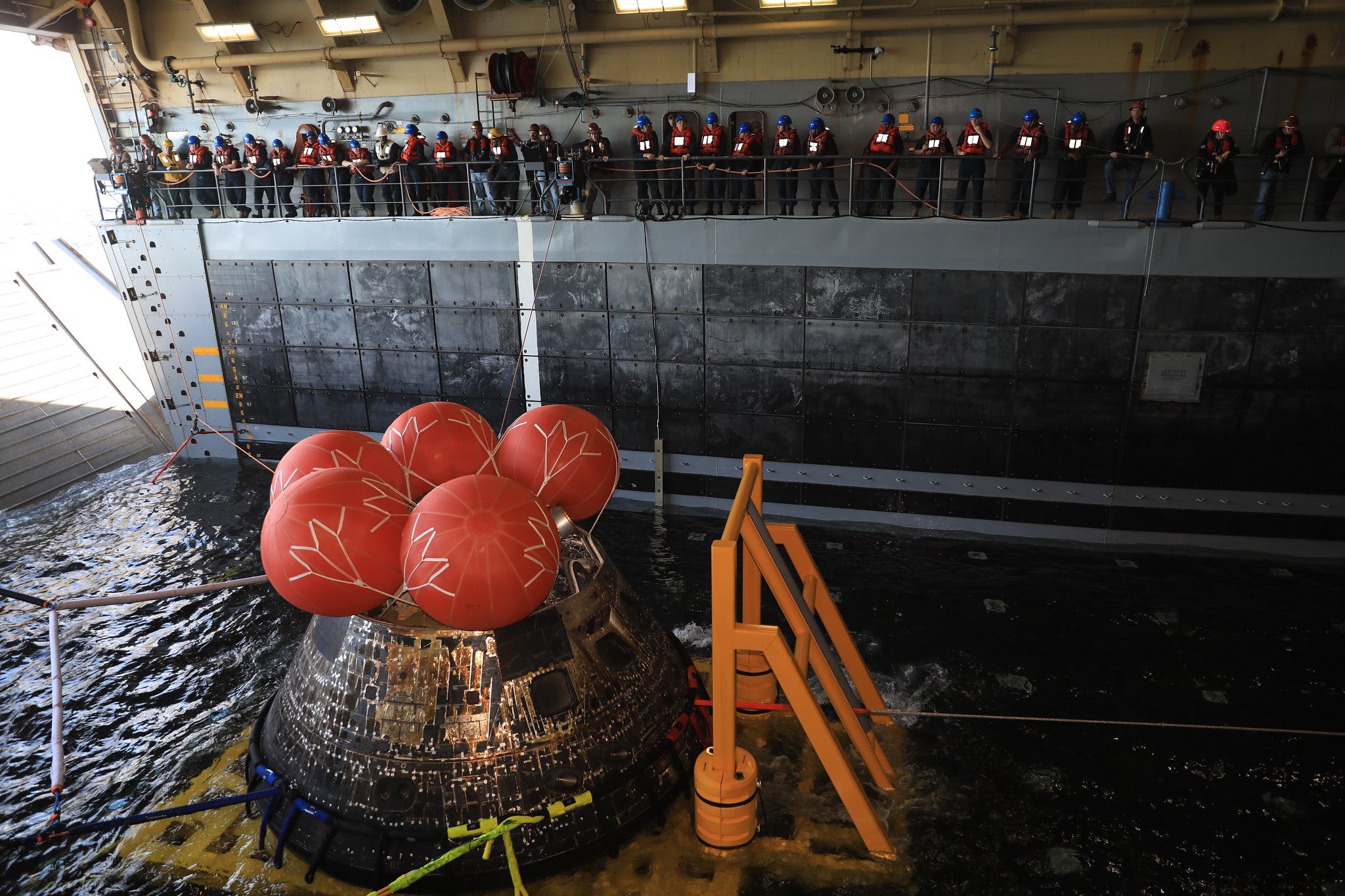
The team placed Orion onto a securing assembly known as the “cradle.” The capsule recovered, the USS Portland then set sail for a U.S. Naval base in San Diego, California. From there, the spacecraft will be loaded onto a truck and shipped to Kennedy Space Centre in Florida for inspections.
“This has been an extraordinarily successful mission,” Nelson told reporters at a press briefing held several hours after splashdown. “It is the beginning of the new beginning — and that is to explore the heavens.”
